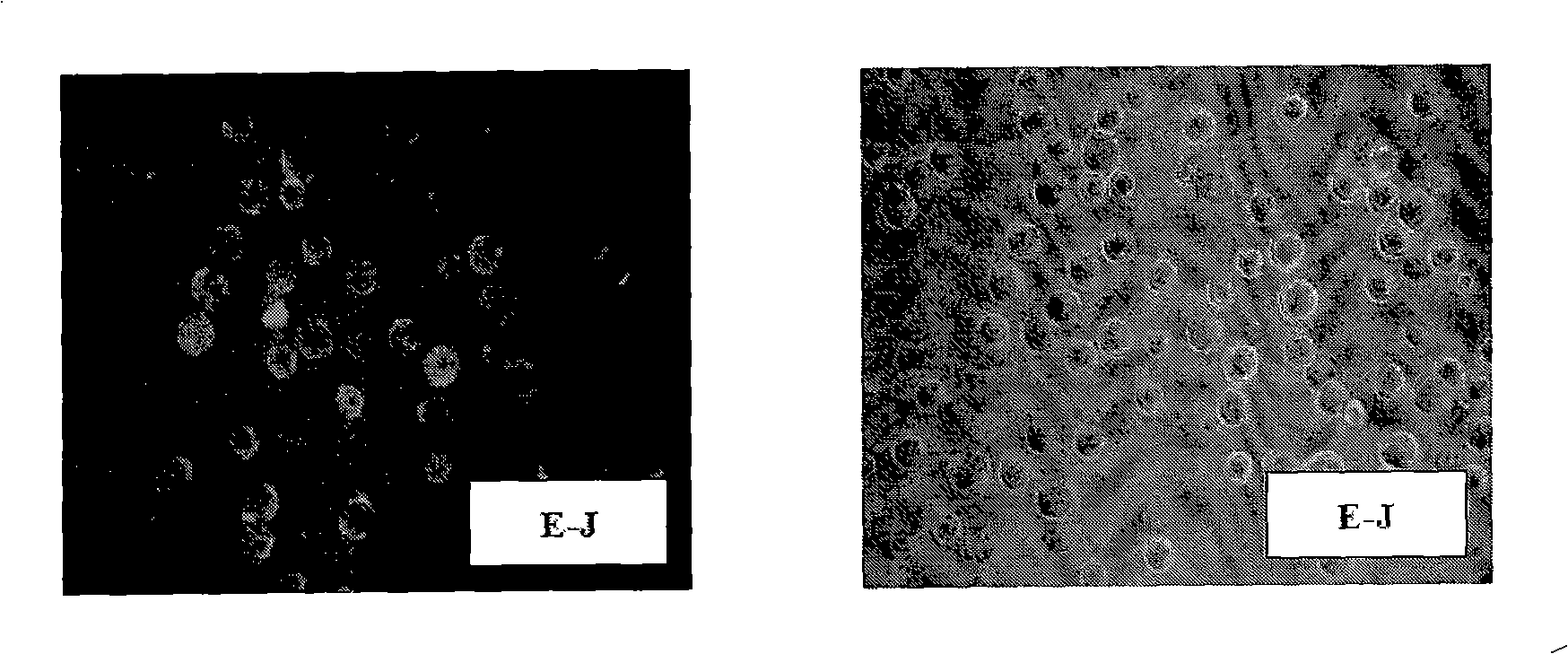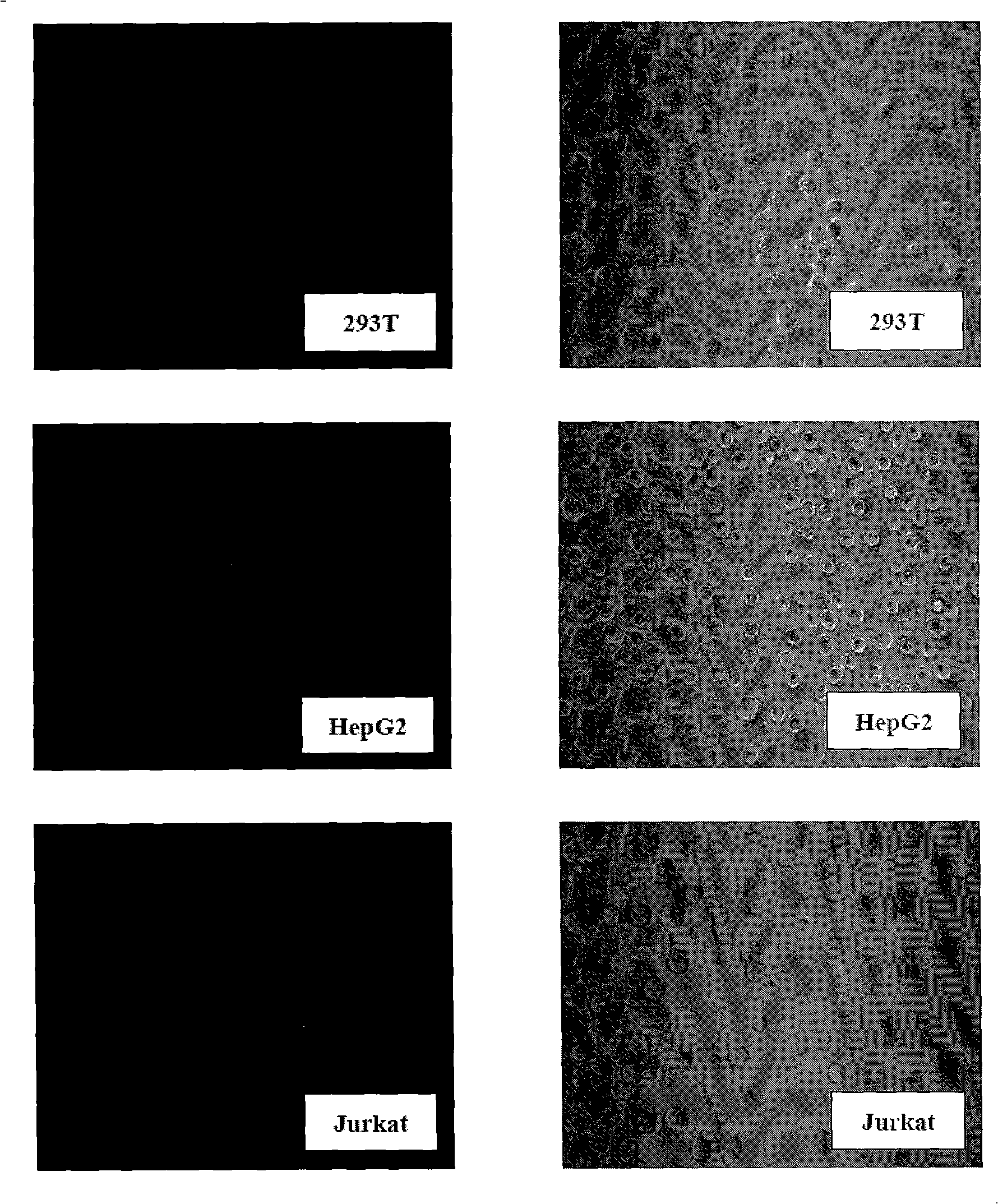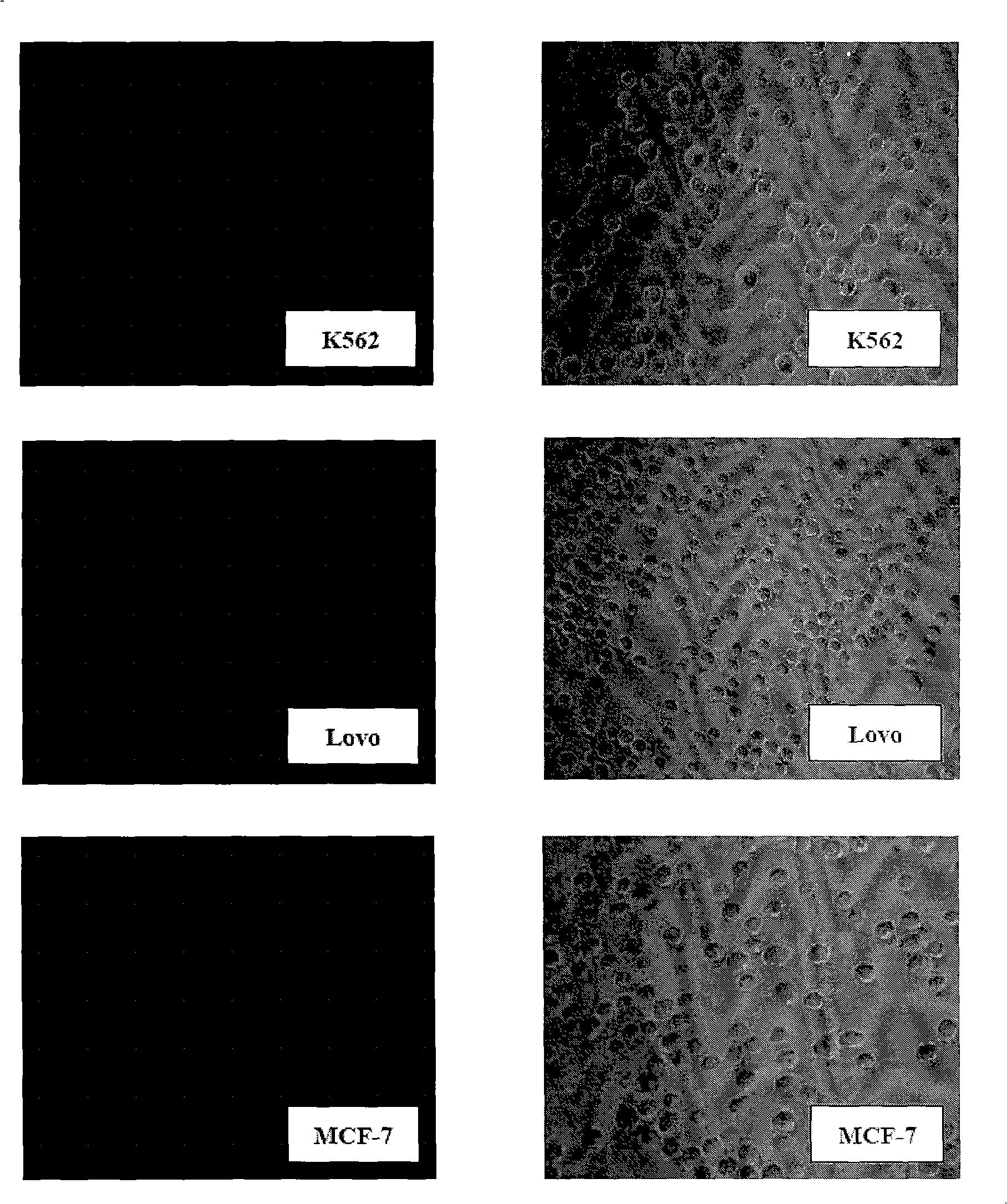Hybrid tumor, antihuman bladder cancer monoantibody and guide medicament, and bladder cancer diagnosis agent
A technology for bladder cancer and hybridoma, applied in the field of medicine and biology, can solve the problems of low sensitivity and specificity, achieve the effects of good specificity, avoid the production of anti-ricin A chain antibodies, and prevent recurrence
- Summary
- Abstract
- Description
- Claims
- Application Information
AI Technical Summary
Problems solved by technology
Method used
Image
Examples
Embodiment 1
[0036] Embodiment 1: Preparation of hybridoma cell lines
[0037] Material:
[0038] Human bladder cancer cell line E-J cells (Beijing Northern Weiye Development Co., Ltd.)
[0039] Balb / C mice (Beijing Weitong Lihua Experimental Animal Technology Co., Ltd.)
[0040] Mouse myeloma cells Sp2 / 0 (ATCC CRL-1772)
[0041] method:
[0042] 1) Immunization: Immunize Balb / C mice with human bladder cancer cell line E-J cells at 1×10 7cells / 0.5ml PBS for intraperitoneal injection. Mice were re-immunized 2 weeks later with the same injection volume and method. After the mouse serum titer reaches the requirement, the cell fusion is prepared, and the mice are boosted three days before the fusion. Mouse myeloma cells Sp2 / 0 (ATCC CRL-1772) were prepared at the same time as the mice were immunized.
[0043] 2) Cell fusion: The sensitized B lymphocytes and myeloma cells were fused according to the following method:
[0044] (1) Take logarithmically grown myeloma cells Sp2 / 0, centrifuge...
Embodiment 2
[0054] Embodiment 2: Preparation and purification of DTB monoclonal antibody
[0055] The above-mentioned hybridoma cell DTB was inoculated into the peritoneal cavity of mice to prepare ascites, and monoclonal antibodies were extracted from the ascites. Purification of monoclonal antibody DTB: using Protein G affinity chromatography. First prepare the Protein G affinity chromatography column, equilibrate the column with PBS, take the ascites fluid containing DTB monoclonal antibody to pass through the column, then wash the column with PBS until the OD value is close to zero, and use 0.2M glycine-HCl solution (pH2. 8) Elution, collect the eluate, measure the OD value of each collection tube, keep the eluate in the peak area, and use the eluate to prepare the immunoconjugate after being concentrated by dialysis.
Embodiment 3
[0056] Embodiment 3: Characterization of DTB monoclonal antibody
[0057] Immunohistochemical staining was performed on human bladder cancer tissue sections according to conventional methods, and the results were as follows: figure 1 , 2 shown. The results showed that the human bladder cancer tissue showed positive reaction after staining with DTB monoclonal antibody, secondary antibody and substrate, while the normal human bladder tissue showed negative reaction after staining with DTB monoclonal antibody, secondary antibody and substrate.
[0058] Immunofluorescence was performed on bladder cancer cells E-J and other cells using DTB monoclonal antibody according to conventional methods. The result is as figure 1 , 2 shown. The results showed that the DTB monoclonal antibody had a strong positive reaction with E-J cells, and had no cross-reaction with other non-bladder cancer cells.
[0059] Table 1 Reactivity of DTB monoclonal antibody with human cell lines
[0060] ...
PUM
| Property | Measurement | Unit |
|---|---|---|
| Sensitivity | aaaaa | aaaaa |
Abstract
Description
Claims
Application Information
 Login to View More
Login to View More - R&D
- Intellectual Property
- Life Sciences
- Materials
- Tech Scout
- Unparalleled Data Quality
- Higher Quality Content
- 60% Fewer Hallucinations
Browse by: Latest US Patents, China's latest patents, Technical Efficacy Thesaurus, Application Domain, Technology Topic, Popular Technical Reports.
© 2025 PatSnap. All rights reserved.Legal|Privacy policy|Modern Slavery Act Transparency Statement|Sitemap|About US| Contact US: help@patsnap.com



